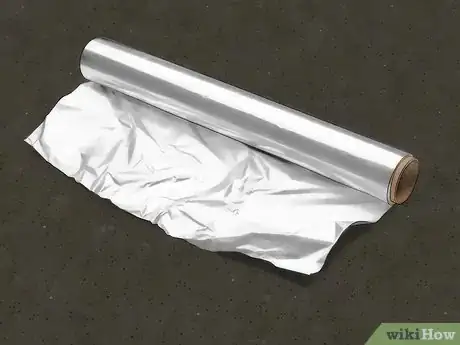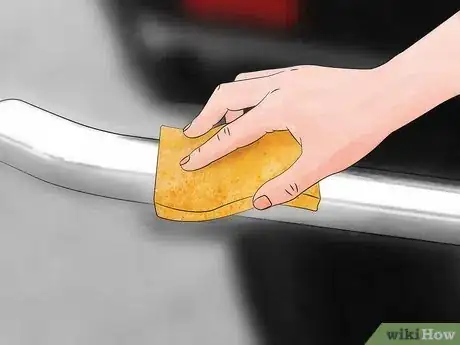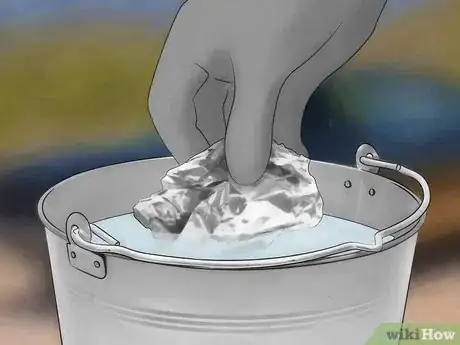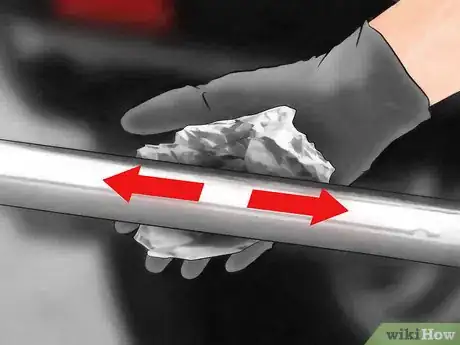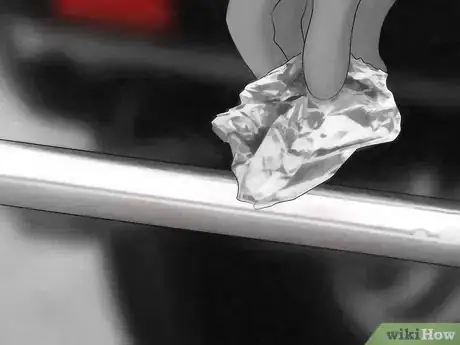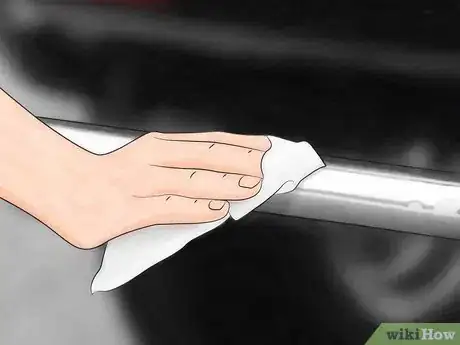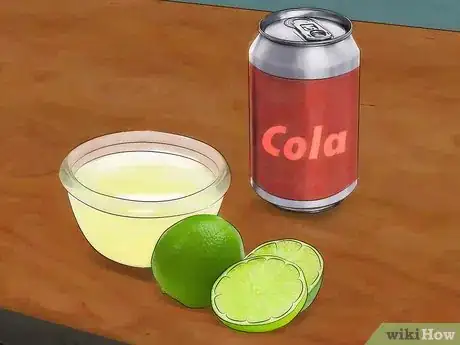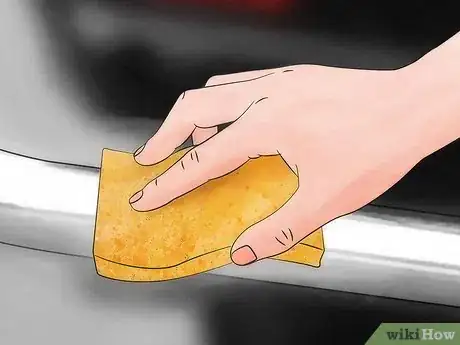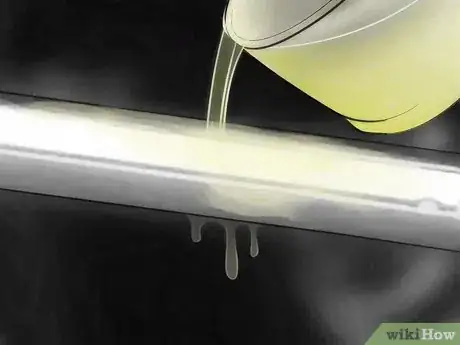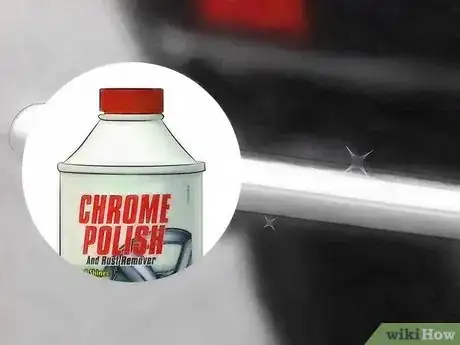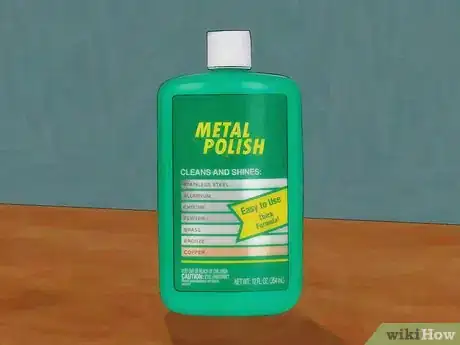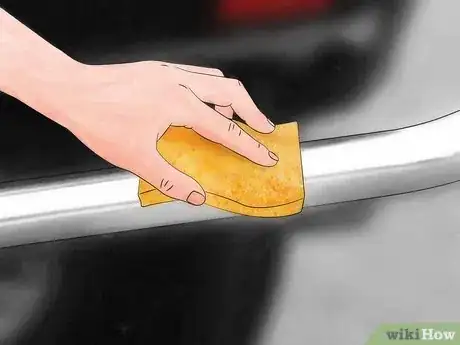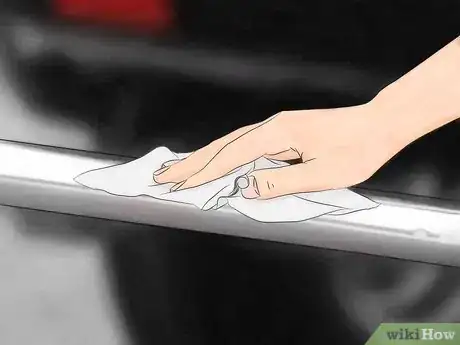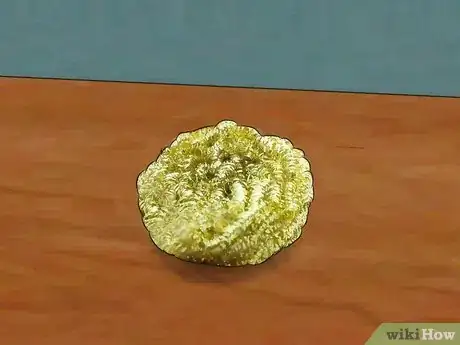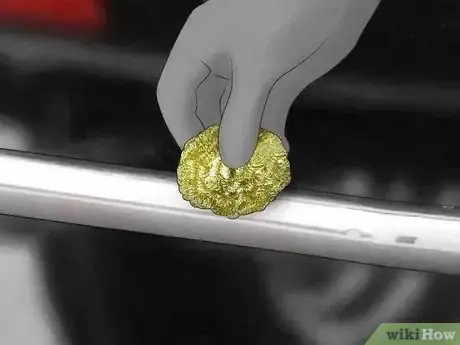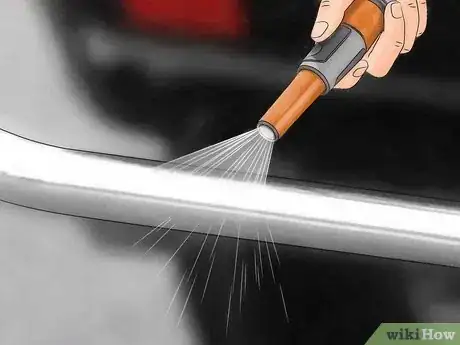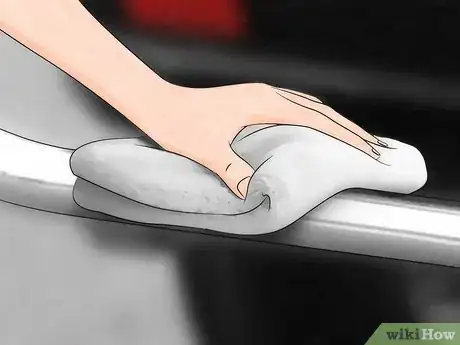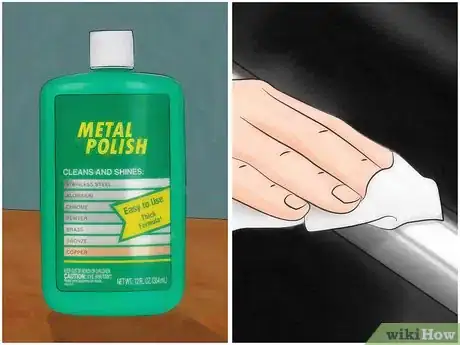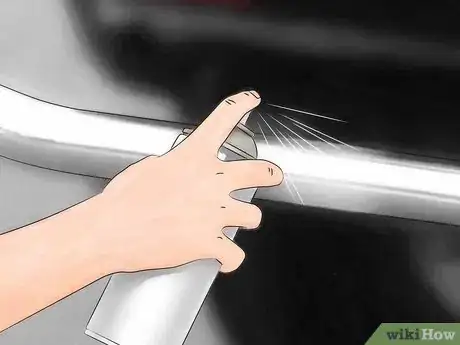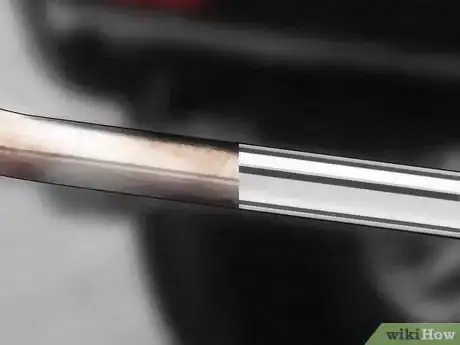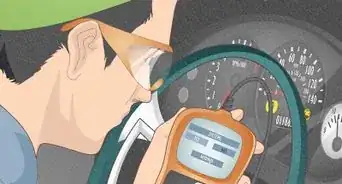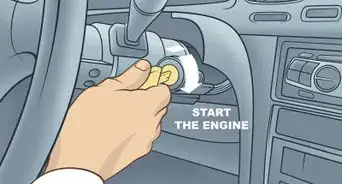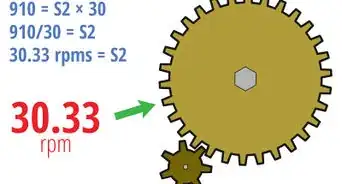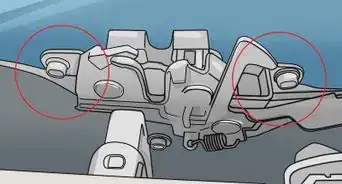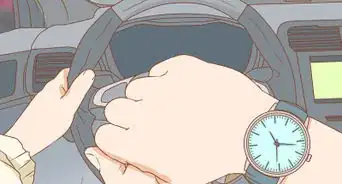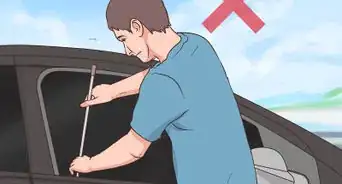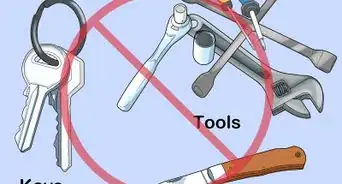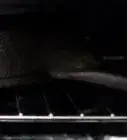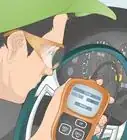This article was co-authored by Joe Hough III. Joe Hough III is a Master Mechanic in Florida. He specialize in diagnostics, electrical, drivability, and air conditioning, and has been doing automotive repair since 1978.
wikiHow marks an article as reader-approved once it receives enough positive feedback. This article received 20 testimonials and 93% of readers who voted found it helpful, earning it our reader-approved status.
This article has been viewed 821,436 times.
Typically, chrome is used to add a shiny or protective coating to other metals, and the metal underneath the chrome is usually the source of rust. Removing this rust with household objects is surprisingly easy with some elbow grease, but more serious follow-up maintenance may be required if the rust is widespread and much of the chrome has flaked off.
Steps
Removing Rust Using Aluminum Foil
-
1Use aluminum foil for an easy, low-cost method for removing rust from chrome. Aluminum reacts with rust chemically, resulting in a material that can be easily wiped or scrubbed off. Since aluminum is softer than most metals, it will not scratch the surface of the chrome or the metal underneath it.
-
2Clean the chrome. Before you attempt to remove the rust on the chrome, clean dirt and debris from the metal using soapy water, or with car wash soap if cleaning painted car parts. This helps you locate and access rusty areas more easily.
- For very dirty or very rusty surfaces, use vinegar or another mild acid suggested below, then follow up with foil.
Advertisement -
3Dip aluminum foil into water. You can use any water, but saltwater is best, since the electrolytes and salts will help speed up the chemical process. Tear off strips of aluminum convenient to use on the rusted area.
-
4Rub the aluminum foil over the rust spots. Rub the aluminum foil back and forth over the rust spots. You do not need to use much pressure, although heavily rusted areas may require slightly more effort and a longer rubbing time.
- Dip the aluminum foil in water again whenever it gets dry.
- If you are working on a severely pitted surface then try wadding up the piece of aluminum foil. The edges that this creates will help to smooth down the metal and will actually fill in the pitted rust areas.
-
5Stop every so often to remove the rust residue. Whenever the rust residue gets too thick, stop and wipe the residue using a rag or towel. This way you can see the remaining rust and continue rubbing it with the aluminum foil.
-
6Rinse the surface of the chrome. Once you have removed all the rust, wipe the surface using a rag to reveal the shiny metal underneath.
-
7Dry the chrome completely. Water spots show up very easily on chrome surfaces, and can cause further rust of the metal below. Use a paper towel or blow dryer to dry the surface. If necessary, consult the section on follow-up care to repair damage and prevent further rust.
- Be sure to apply a coat of polish or wax on your clean chrome to prevent more rust from forming.
Removing Rust Using Mild Acid
-
1Use cola, lime juice, or other mild household acids. Any cola or soda that includes phosphoric acid in the ingredients can be used to remove rust. Other options include lime juice or vinegar. These mild acids can remove rust without significant risk to the surrounding metal.
- Diet cola does not have sugar in it, so the process will be less sticky. However, the sugar does help the acid to adhere to the rust.
- Avoid strong or concentrated acids, which can etch and weaken the underlying metal. If these household acids are ineffective, try again with phosphoric acid, but keep a fan on to blow corrosive fumes away from your face.
-
2Clean the chrome. Before you attempt to remove the rust on the chrome it is best to make sure all the dirt and other debris are removed. This helps you to see and access the rust more easily for removal. Use car wash soap to clean painted surfaces on cars, and regular soapy water for other chrome objects.
-
3Soak or cover the chrome with the acid. Ideally, soak the object for 15 minutes before removing. If you cannot soak the object, then simply pour the mild acid over the surface.
-
4Wipe or scrub the rust off. You may need to use a rough sponge or gentle dish scrubber to remove the dissolved rust. Scrubbers designed for use on glass cookware tend to have the lowest risk of scratching your chrome. To remove heavy rust, rub gently with strips of aluminum foil or scrub with scouring pads.
-
5Wash off residue with a safe soap. If you are cleaning a car, use car wash soap to remove the rust and acid residue. Dish soap should not be used on painted car surfaces, since it may strip the paint. Unpainted surfaces can be cleaned using any ordinary soap and water.
-
6Dry and care for the car. Remove moisture with paper towels to minimize further rust. If the rust has caused noticeable damage, refer to the section on follow up care.
- Apply a coat of polish or wax on the chrome to prevent rust from forming in the future.
Removing Rust Using Oil or Chrome Polish
-
1Use chrome polish for the quickest removal, or oil to save money. Chrome polish is the most expensive of the methods for removing rust, but a quality product will make removal quick and easy. A light penetrating oil such as WD40, CLR, or CRC can be used instead, and is typically the cheaper option.
-
2Clean the chrome using soapy water. Before you attempt to remove the rust on the chrome it is best to make sure all the dirt and other debris are removed. This helps you to see and access the rust more easily for removal.
- If the dirt is very difficult to remove you can also use vinegar to clean the surface of the chrome. Vinegar is a mild acid and will help in the process of rust removal as well.
-
3Apply oil or chrome polish to the rusted area. Spread the cleaning substance over the rusted area on the chrome and make sure it is coated completely to avoid scratching the surface.
-
4Apply oil or chrome polish to brass wool or fine steel wool. Soft brass wool or a brass wire brush is best for this purpose, since it is less likely to cause major scratches. If you cannot find brass wool, use the finest steel wool available, preferably grade #0000. Coating it with additional chrome polish will also help prevent scratching.
-
5Rub the wool gently over the rusted area. Gently rub using a circular motion while making sure that the surface is moist at all times. Do not apply pressure while rubbing or else you will damage the surface.
- If the area gets dry then be sure to add more oil or chrome polish. Rubbing dry chrome with metal wool will scratch and damage the surface.
-
6Rinse the area with clean water. Rinse off the metal polish and removed rust by washing the area with water.
-
7Check for additional rust spots. If the surface of the chrome is not completely free of rust spots then use additional chrome polish to try to remove the spots using the same method.
-
8Dry the chrome completely. Water spots show up very easily on chrome surfaces so it is best to dry the chrome completely to make it shiny and brilliant.
- Make sure to put a coat of polish or wax on the chrome to keep the rust from reforming.
- If extra care is needed, check out the followup section below.
Repairing and Protecting Chrome after Rust Removal
-
1Buff and dry the surface. If the rust only showed through the chrome in pinpricks, drying the surface with a towel after cleaning may be enough to keep up the chrome's appearance.
-
2Protect the metal using polish or wax. Apply a wax or polish to the chrome to protect it from any further damage. Use a product only for its intended purpose, such as car wax for chrome-plated vehicles.
- Typically, wax is applied, buffed and left to dry, then a second layer is applied over it and buffed again.
-
3Apply silver paint. This will keep a nice shine on the chrome, but the level of rust protection depends on the brand of paint and how well it is applied. Select a paint appropriate to the task, typically automotive paint, and apply as evenly as possible over areas pitted by rust damage. Use a fine, 1200 grit sandpaper to smooth it down after it dries, taking care to avoid sanding unpainted areas.
-
4Get the object re-chromed. This is an expensive option, usually only performed on cars that were severely damaged by rust. Hire a mechanic who offers a chrome plating service if you want to re-chrome your car. If you're feeling ambitious, you can try to chrome plate objects at home, especially if they are relatively small.
Warnings
- Sandblasting or grinding is not recommended, since they can easily damage the underlying metal.⧼thumbs_response⧽
- Some cars use plastic or paint that imitates chrome, not chrome itself. While these methods work on the rust itself, not the chrome, they may have unpredictable effects if your car is trimmed with an unidentified substance.⧼thumbs_response⧽
Things You'll Need
- Steel wool
- Light penetrating oil or chrome polish
- Cola, lime juice, or vinegar
- Aluminum foil
- Rag
About This Article
Before you try to remove rust, first clean your chrome. Then dip a piece of aluminum foil into water and rub it over the rust spots, since aluminum reacts chemically with rust. You can also try removing rust with cola, lime juice, or vinegar, which are all mild acids, by soaking the rust spots in one of these liquids for 15 minutes or pouring them over the rust spots if that's easier. When you’re done removing any rust, be sure to rinse the chrome completely and dry it thoroughly. For more suggestions from our reviewer, including how to use oil or chrome polish, keep reading!
